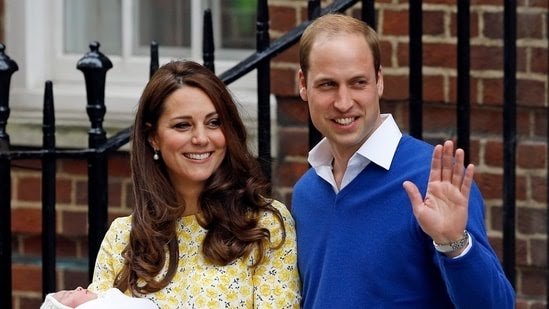ROYAL FAMILY
Breaking News: What is the ‘Prince William effect’? Everybody is going into a spiral…..Read More

Prince William’s new rugged beard look is creating a trend, leading to a surge in beard transplant requests.
Since marrying into the British monarchy in 2011, Kate Middleton has been widely recognized as a global fashion icon. Known for her impeccable style, the Princess of Wales often sparks a frenzy with her wardrobe choices, leading to a phenomenon dubbed “the Kate effect.”
Amidst Kate’s sartorial influence, her husband, Prince William, now appears to be carving out his own path in the world of style and spreading “the William effect.”
This summer, the 42-year-old future monarch debuted a rugged new look, showing off a fuller beard. Though he briefly shaved it off after initial backlash from his daughter, Princess Charlotte, he quickly grew it back. “Charlotte didn’t like it the first time,” William shared during a recent event in Cape Town, as People Magazine reported. “I got floods of tears, so I had to shave it off. Then I grew it back… and convinced her it was going to be okay.”
Notably, following “the William effect,” men are increasingly seeking beard transplants to emulate the Prince’s look, per Murat Alsac, co-founder of Istanbul’s EsteNove clinic.
“People are bringing in pictures of Prince William on their phones and saying, ‘Make me look like that,’” Alsac told Express, noting a 200% increase in beard transplant procedures.
What is the ‘Kate effect’?
Just like Williams’ chivalric charm, the “Kate effect” is more than just a buzzword; it has a tangible economic impact, reportedly boosting the UK fashion industry by an estimated £1 million annually. Like her moments include wearing the Reiss ‘Nanette’ dress during her first royal tour, which sold out within minutes and still fetches double its original price on resale sites.
Similarly, when the Princess of Wales sported Alicia Camilla Elphick pumps at a charity polo match in 2022, the designer revealed, “The phones didn’t stop ringing all day,” as the shoes flew off the shelves.
Iran announced Tuesday that all governmental offices, universities, and schools in the province of Tehran will be closed for two days because of poor air quality, state TV reported.
The capital city of Tehran — home to over 10 million people — saw the closure of elementary schools and kindergartens on Saturday and Sunday, but authorities said Tuesday that because of increasing pollution, all governmental offices, universities and schools will be closed on Wednesday and Thursday, adding that schooling will continue on online platforms.
The TV report also said that banks, essential public services and health centers would remain open on those days.
Authorities also announced that schools and universities in neighboring Alborz province, and the central province of Isfahan will be closed on Wednesday and Thursday.
In Iran, schools usually work from Saturday to Wednesday.
On Tuesday visibility was low in Tehran, and authorities warned of poor air quality and advised the elderly, sick, and children to take extra precautions.
From time to time, authorities respond to the pollution with similar measures.
Tehran’s air quality is among the worst in the world. The smog is mostly caused by heavy traffic due to millions of fuel-burning cars, motorbikes and factory emissions. It worsens during the cold season because of a lack of wind and rain.
The city is surrounded by tall hills and mountains on three sides. Cold, stagnant air settles in the valley, trapping automotive and other emissions that cannot escape.
In July 2022, schools and government offices closed in Iran’s capital and several other cities in the country, after a sandstorm blanketed Tehran and the surrounding region.












